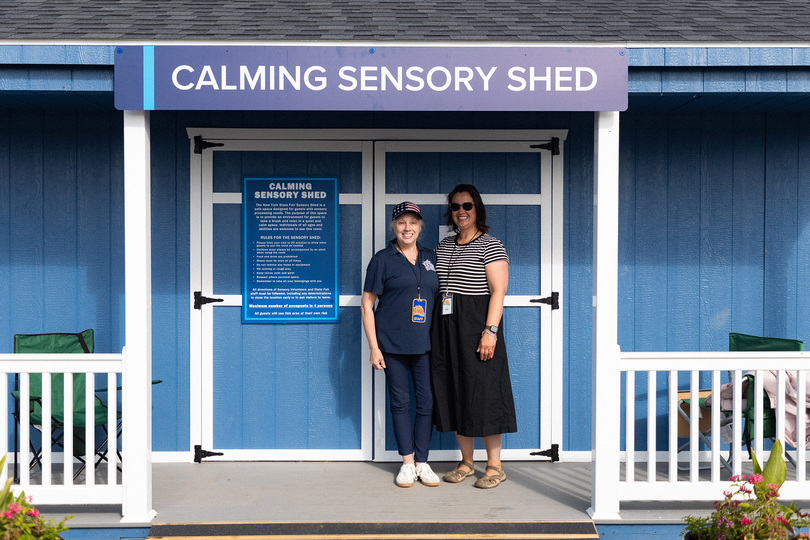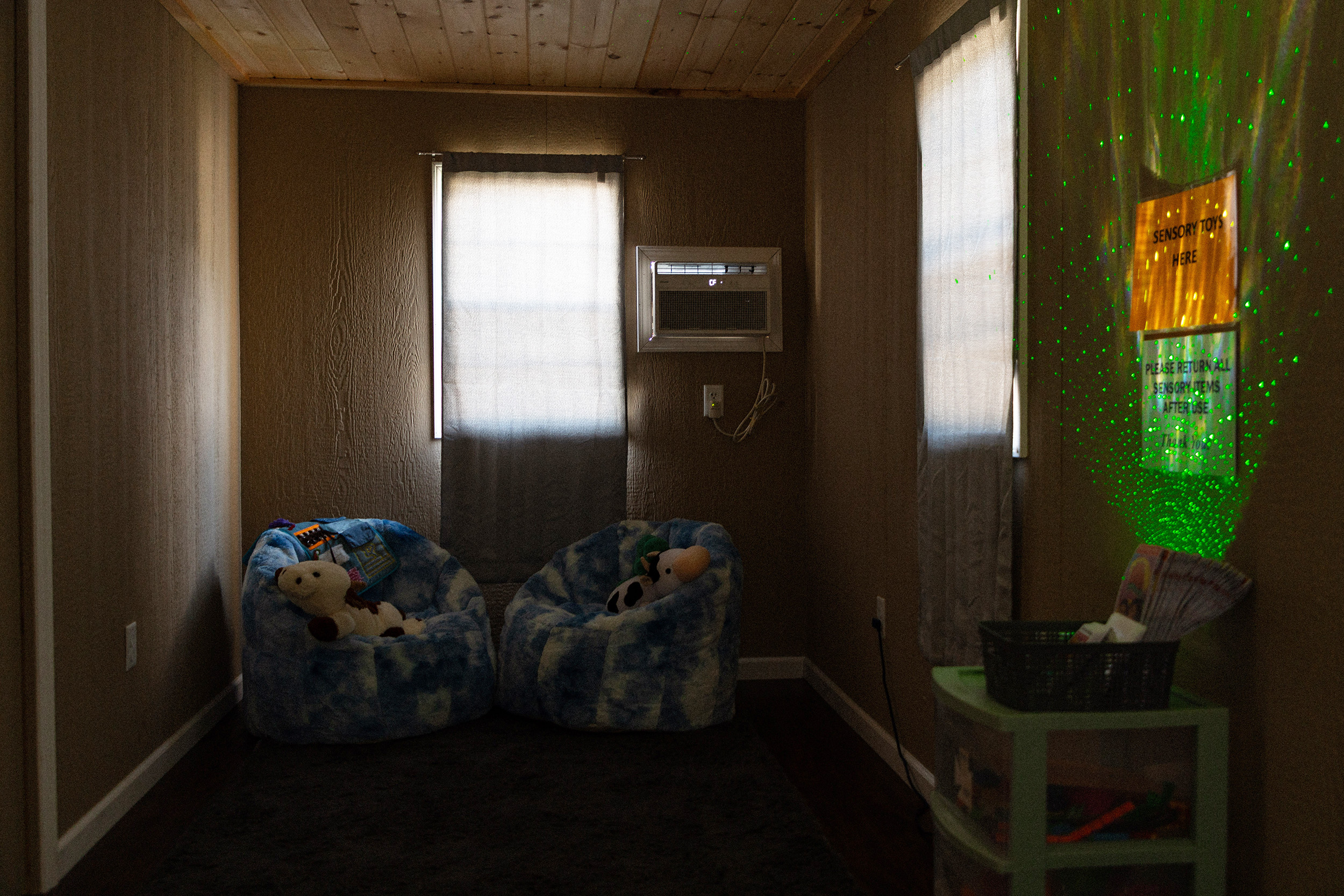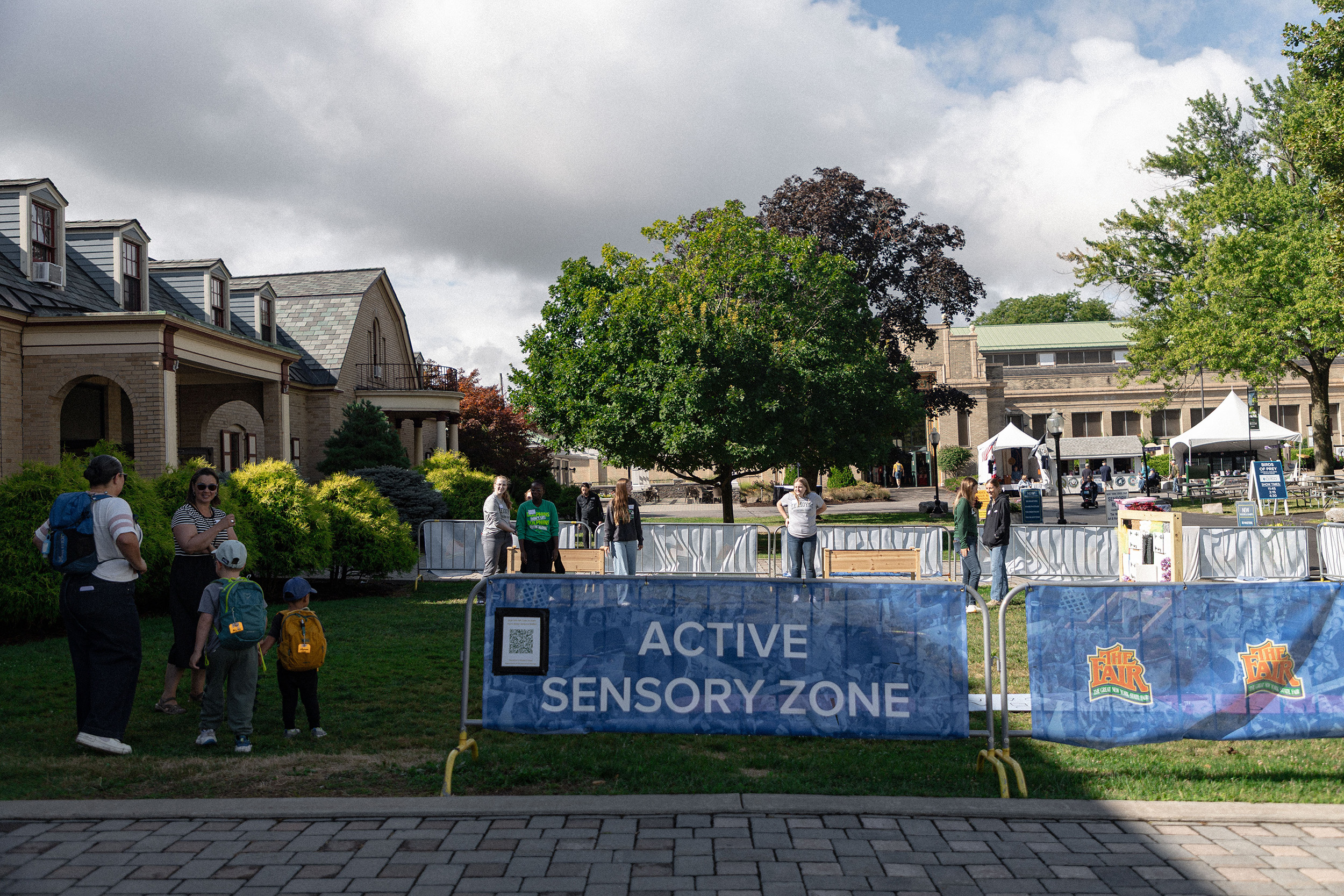Quiet rides, spaces welcome those with sensitivities to NYS Fair

The Great New York State Fair turned off its lights and loud music on Wednesday for Sensory Friendly Day. This initiative, along with sensory-friendly spaces on the fairgrounds, aims to make the Fair more accessible for people with neurodivergences. Joe Zhao | Senior Staff Photographer
Get the latest Syracuse news delivered right to your inbox.
Subscribe to our newsletter here.
A typical day at the Great New York State Fair includes bright lights, loud music and announcements that can be heard far and wide across the fairgrounds. Fairgoers scream and shout as they ride Cyclops and Downdraft, with bellies full of fried turkey legs and gator mac and cheese.
But the lights were turned off and all fell silent at the Fair on Wednesday morning.
“While the excitement and the noise and the lights and sounds might be really exciting to one person, it might be really terrifying to another person,” said Piper Cooper, senior administrative analyst at the Fair. “You never know what they might be experiencing.”
The Fair held its second-ever Sensory Friendly Day on Wednesday from 9 a.m. to 1 p.m. Rides on the Midway operated without lights while the sounds, music and public announcements throughout the Fair were limited to create a more comfortable environment for those with sensitivities to audio and/or visuals. The initiative is part of the Fair’s recent goal to make the event more accessible for people with neurodivergences.
Michelle Arazoza, the superintendent of sensory spaces at the Fair, said the NYS Fair is the first fair in the country to recognize neurodivergent people’s need for a space to regroup and pause amid all the things to see, hear and do at the Fair.
“We believe the Fair is for everyone,” Arazoza said.

The calming sensory shed at the Great New York State Fair creates a space for fairgoers to regroup and pause. With dim lighting, a hammock, bean bags and coloring supplies, attendees can decompress from the loud sounds and brights lights of the Fair. Joe Zhao | Senior Staff Photographer
Cooper first had the opportunity to help create more sensory-friendly initiatives at the Fair last year. She worked with community advocates, local nonprofits and Le Moyne College’s occupational therapy program to determine the best options for incorporating spaces that better accommodate those with sensitivities.
These efforts are important to the Fair because people of any age or ability should be able to come and enjoy all it has to offer, Cooper said. Everyone goes through life and experiences things differently, she said, but that shouldn’t hinder their time at the Fair.
“If this allows those that might have some other sensory-processing issues to visit and have a good time, we want to give that opportunity,” Cooper said.
There are now a total of three permanent sensory-friendly spaces at the Fair: a calming shed by Midway and Suburban Park, an indoor space and an outdoor space at the Wegmans Art and Home Center.
The main calming sensory room in the Wegmans Art and Home Center is new to the Fair as of last year. It features a table of brochures with breathing exercises and check-in cards that ask fairgoers to rate how they’re feeling. Dim lighting oversees a hammock, bean bags and a table filled with coloring supplies to help people destress. The room is open daily from 10 a.m. to 5 p.m.
After hearing positive feedback from families, the sensory-friendly staff at the Fair introduced the calming sensory shed and outdoor motor zone activity as new additions this year.
The indoor sensory room and the calming sensory shed are quiet, dark and calming locations that help people rest and regulate their nervous system. But the outdoor motor activity zone is an area for fairgoers to “get their wiggles out,” Arazoza said.
The outdoor space includes play mats, hula hoops and sensory bins and boards so users can play with rubber bands and touch different textures.
Cat Lavoie of Cicero brought her two sons, ages 3 and 4, to the outdoor space during their visit on Sensory Friendly Day. They’ve used interactive spaces like this before at children’s museums, and she also incorporates tactile activities at home.
Lavoie believes sensory-friendly spaces, like the ones at the Fair, can be educational for those who haven’t interacted with them before.
“It can show people ways to interact with the world that maybe we don’t always get to,” Lavoie said.

The outdoor motor activity zone allows fairgoers to “get their wiggles out,” Michelle Arazoza, the superintendent of sensory spaces at the Fair, said. The space includes play mats, hula hoops and sensory bins and boards. Joe Zhao | Senior Staff Photographer
These spaces are accessible and open to everyone, and Arazoza said she’s had adults come to the shed to decompress for the same reasons as a child: they want to reset before going back out to enjoy the Fair.
Cooper said the Fair’s sensory-friendly staff felt a “wealth of positive feedback.”
Susan Dantz, a staff assistant at the Fair, said even nurses, social workers and teachers who have come through realized they could replicate the Fair’s sensory-friendly space in their own workplace.
She said it’s heartwarming and touching to see how families react to the Fair’s addition of these spaces. Some parents told Cooper they wished these spaces would’ve been around for their child in the past. Others weren’t aware of the sensory-friendly spaces previously, but went on to spread the word to fellow parents or friends.
“It means a lot to them,” Cooper said. “If they visit the space for 10 minutes or come back to see it three or four times a day.”
Other parents have expressed gratitude because the spaces gave their child a place to calm down before returning to the Fair when they weren’t ready to leave quite yet. A wide array of needs from all walks of life come to these sensory spaces, Dantz said.
Cooper would like to keep expanding this inclusive programming for those with sensitives into future years of the Fair. Dantz hopes the Fair can get more volunteers on board and eventually expand the sensory-friendly hours.
“We focus primarily on neurodivergence, but also just on the everyday person that needs that calming environment,” Dantz said.






